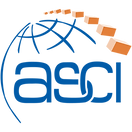Surplus Material: Smart Ways to Get Rid of Excess Equipment, Parts, and Supplies
- Rosita Johnson
- Aug 17, 2022
- 4 min read
Updated: Aug 26, 2022
By Rosita Johnson

Your project is over and you have leftover equipment, material and supplies. Your warehouse is also storing inventory with critical parts and consumables, some of which have not been issued out of stock in over two or three years. These excess items and dead inventory take up valuable storage space, and require money and labor to maintain. What are your options to efficiently and cost effectively discard of surplus? There are several disposition opportunities, with each one benefiting a company in a different way, depending on the type, the condition and the quantity of the item(s).
Redeploy
The most cost rewarding option is to redeploy the material for a different job or a different division within the company. This would help to avoid buying a new item, save on procurement costs, and prevent the expense associated with other disposition methods, such as shipping material for scrap.
Return
Equipment and parts can sometimes be returned to the manufacturer or the distributor that it was purchased from. The cash back or credit value will most likely not be 100% of the original purchase price, but it is still one of the best options to recoup your expenses. Many manufacturers offer a Buy Back option to avoid having their equipment and parts ending up in landfills, or to refurbish items for resale.
Resell
You can contact other companies to find out if there is any interest in your excess items, which may require using a broker. That may be a tougher sell, as some companies have a policy not to do business with their competitors. Plus, selling equipment privately can take a lot of time and money. Using an auctioneer such as Ritchie Brothers is another option and is one of the most common ways to sell used machinery and spare parts, and is a great method of selling high-demand items.
Online actions allow you to have the flexibility of selling according to your schedule, while live auctions often gather a lot of attention with buyers that want to physically see the item and its condition. Auctions can give you access to buyers you might not usually consider or encounter, which leads to higher demand for your items and can result in a quick sale at a great price. Finally, auction is also a good way to get rid of multiple items in one go, instead of using different channels of disposition. Using a broker or an auctioneer would require paying a commission or a flat fee from the sale, which tend to be pretty high. However, you end up working with a professional or a business that takes care of the tasks that otherwise would cost you a lot of time.
Recycle or Scrap
Some items can be scrapped or recycled. If the item is too old or is no longer functional, scrapping is often the only option and recycling can lead to some of the expense being recovered via the payment from the recycling company. Sending items to the landfills can be expensive in terms of transportation and labor. It is also the most negative solution from an environmental and corporate reputation perspective with recycling being a better option. Though any money you recoup through recycling is often insignificant, it is a better option that letting material collecting dust at the valuable warehouse or yard space.
Donate
Donating excess items is an option that many companies do not often consider. Not only is it a way to get a tax credit, benefits the company’s public image, especially if the equipment or parts were donated to a non-profit organization. In this case, always make sure to complete the proper paperwork so your company can get a tax deduction. Check out an example of a compony donating excess process equipment from the the gas to liquids pilot plant a local university here.
Conclusion
Effectively managing your company’s surplus is a critical aspect of the end-to-end supply chain. Choosing the proper disposition method requires the right skillset and sometimes a lot of time. Hiring an expert, such as ASCI, is a great way to implement a cost effective and an efficient disposition management program. Our surplus material program includes identifying the excess items, determining the disposition method based on item’s condition and market value, and handling paperwork and transportation for the item to be sent to refuse, recycling, sale destination, or donation recipient.
ASCI’s largest inventory optimization project with in 2016 generated $12,676,724 in excess and surplus electrical and pipe material, which was either sold at a Ritchie Brothers auction or sent to Fairbanks for recycling. In 2017, ASCI assisted a client with the Buy Back program of excess rotating equipment with one of the major distributors, which resulted in cost savings of over $400,000. In 2020, ASCI was in charge of a project to surplus electrical, pipe, and heavy equipment with the total sales value of $1,394,267. ASCI also assisted a client with the sale of 165 tanks in the Bakken field that were no longer needed for operations, and negotiated a significant payment for the total of $165,000.
ASCI specializes in helping businesses like yours address supply chain and asset management, including surplus material disposition. We offer consulting services to help your team with safety, responsiveness, and integrity. Visit our website to learn more and to arrange for a free consultation.
.png)


